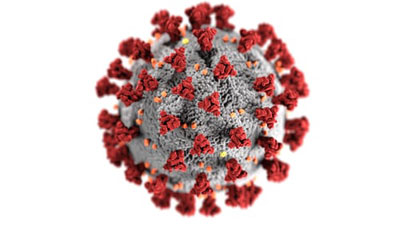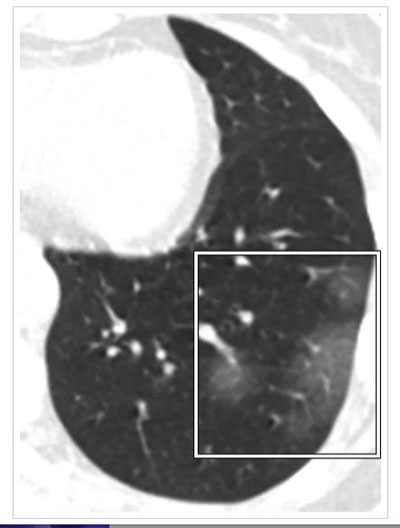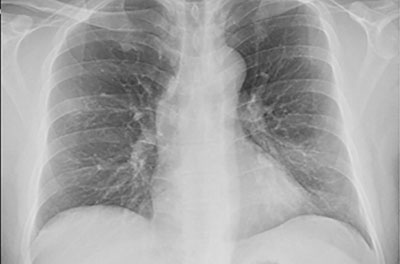Sunday Times 2
How did COVID 19 begin and spread all over the world?
The world is in the grip of a pandemic caused by a new virus. It began when a large number of cases of unexplained pneumonia (lung infection) were detected in Wuhan, in China’s Hubei province. China first reported it to the World Health Organisation (WHO), on December 31, 2019. The new virus belonged to the Coronavirus (CoV) family.

Prof. Shanthi Mendis
This virus proved to be very contagious and quickly spread to other countries. By the end of January 2020, it had spread to 18 countries with four of them reporting human-to-human transmission. On January 30, 2020, as per the International Health Regulations (IHR, 2005), the outbreak was declared by the WHO a Public Health Emergency of International Concern.
Within a few weeks, by March 2020, number of COVID-19 cases outside China increased more than tenfold and more than 118,000 cases were reported in 114 countries and over 4,000 deaths. On March 11, WHO declared it a pandemic
What is this new virus? Where did it come from?
Corona viruses (CoVs) have become major causative organisms of emerging respiratory disease outbreaks. They cause illnesses ranging from the common cold to pneumonia. In 2012, the Middle East Respiratory Syndrome Corona virus (MERS-CoV) was identified in Saudi Arabia. It was responsible for about 2,500 cases and 800 deaths. The new virus responsible for the current pandemic, is called the SARS-CoV-2, as it is very similar to the one that caused the Severe Acute Respiratory Syndrome Coronavirus (SARS-CoV) in 2002 to 2003. Despite the similarity, SARS-CoV2 is more deadly than SARS-CoV due to mutation.
Corona virus is so named because it has a crown of spikes on its surface (see figure). Corona viruses are a large family of single-stranded RNA viruses that can be isolated in people and in different species of animals, including bats, camels, cattle and cats. For reasons yet to be explained, animal coronaviruses can infect people and then spread between people. This is what happened with this new virus (SARS-CoV-2) as well as with MERS-CoV and SARS-CoV. Although the exact dynamics of SARS-Cov-2 are yet unknown, all three viruses probably originated from bats and moved on to other mammalian hosts — before jumping to humans.
The SARS outbreak of 2003 was traced to a wet market in the Guangdong Province in China. At that time the Chinese government imposed a temporary ban on wet markets and the wild-animal industry which was lifted later that year. After the COVID-19 outbreak in Wuhan the Chinese Government again issued an edict banning the country’s “wet markets”. Such markets are found in many other countries posing a major public health risk.
To reduce these risks, consolidated and coordinated global and national efforts are necessary to ban illegal wildlife markets and trade.
 How does the SARS-CoV-2 virus infect you and make you ill?
How does the SARS-CoV-2 virus infect you and make you ill?
The virus is carried in the secretions of an infected person and often it contaminates their hands. If an infected person coughs or sneezes the virus is transmitted in the breath in droplets to another person, if that person is less than about 3 feet away. Infected people transmit the virus to surfaces and objects they touch.
The virus enters cells by attaching to docking stations known as ACE-2 receptors. These receptors are found on the surface of cells of many organs including blood vessels, lungs, heart and kidney. Once the virus enters the human cells it takes over the cell machinery and uses it to make thousands of virus particles.
A person infected with this virus may experience fever, tiredness, headache, runny nose, cough and breathing difficulty. As ACE-2 receptors are abundant in the lungs, they get infected readily and become scarred and malfunctional causing acute breathing difficulties. Such patients may require treatment in intensive care units. As shown in figures, chest X ray and CT scan of lung of COVID-19 patients may show ground glass opacities.
The case studies of Li et al. published in the New England Journal of Medicine (NEJM) on January 29, 2020, provides information on the first 425 cases recorded in Wuhan. As reported, the clinical spectrum of COVID-19 varies from asymptomatic or mild symptomatic forms to clinical conditions characterised by respiratory failure that necessitates mechanical ventilation and support in an intensive care unit (ICU), to multiorgan failure and septic shock. About half the cases of critical patients had pre-existing conditions such as cardiovascular disease, diabetes, chronic respiratory disease, and cancer. Overall 2.3% of confirmed cases died but in elderly patients, in particular those aged 80 or above death rates were about five fold higher.
 Anyone can get infected with COVID-2. The following conditions make people more vulnerable to COVID-19 infection:
Anyone can get infected with COVID-2. The following conditions make people more vulnerable to COVID-19 infection:
- The elderly
- Cardiovascular disease or diabetes
- Chronic respiratory disease including asthma
- Cancer
There is a possibility that certain blood pressure lowering medicines e.g. ACE-inhibitors and angiotensin receptor inhibitor drugs may amplify COVID-19 severity. However, at present international cardiology bodies strongly recommend that patients stay on current antihypertensive therapies.
How can you to control and prevent spread ?
There is a lot of good advice and guidance in this regard including from the World Health Organisation and the Ministry of Health (//www.who.int/emergencies/diseases/novel-coronavirus-2019/advice-for-public). In summary there are five key advice to the public:
1. Avoid touching eyes, nose and mouth as hands may pick up viruses from contaminated surfaces and transfer the virus to your body through your eyes, nose or mouth.
2. Frequently wash your hands taking at least 20 seconds, with soap and water or use an alcohol-based hand rub to kill viruses that may be on your hands.
3. Maintain at least 3 feet distance between yourself and others because sneezing and coughing may spray liquid droplets from their nose or mouth which may contain the virus.
4. Avoid gatherings as much as possible and if you are going to a crowded place wear a face mask covering your nose and mouth.
5. If you have fever, cough and difficulty breathing, seek medical care early and follow the directions of your local health authority.
What is on the horizon to control COVID-19?
Currently, no approved vaccines exist to prevent infection with SARS-CoV-2. Scientists are racing to come up with an effective vaccine. One such research effort is a Phase 1 clinical trial evaluating an investigational vaccine designed to protect against COVID-19, which is ongoing at Kaiser Permanente Washington Health Research Institute in Seattle. The National Institutes of Health, is funding the trial. The open-label trial will enrol 45 healthy adult volunteers and the results are expected to be available in a few months.
The WHO has just launched a global megatrial of the four most promising coronavirus treatments. An experimental antiviral compound called remdesivir; the malaria medications chloroquine and hydroxychloroquine; a combination of two HIV drugs, lopinavir and ritonavir; and that same combination plus interferon-beta, an immune system messenger that can help cripple viruses.
According to WHO, enrolling subjects in the trial from anywhere in the world will be easy. When a confirmed case of COVID-19 is deemed eligible, the physician can enter the patient’s data into a WHO website, including any underlying condition that could change the course of the disease, such as diabetes. The participant has to sign an informed consent form that is scanned and sent to WHO electronically. After the physician states which drugs are available, the website will randomize the patient to one of the drugs available or to the local standard care for COVID-19. Physicians will record the day the patient left the hospital or died, the duration of the hospital stay, and whether the patient required oxygen or ventilation.
Impact of good political leadership and solidarity on the progress of the pandemic
The outbreak is progressing at different speeds in different countries, depending on demographics and other factors.
As recommended by WHO all countries need to work to
1. prepare and be ready;
2. detect, protect and treat;
3 reduce transmission; and
4. innovate and learn, while protecting vulnerable people.
Many countries are following this guidance and taking bold actions. Some countries have declared a state of emergency, and some form of lockdown order, shutting down schools and virtually closing airports. In Sri Lanka, the Government, the Ministry of Health, the police and the armed forces under the able leadership of President Gotabaya Rajapaksa, have taken laudable and timely measures to detect, protect, treat while reducing transmission. In this regard, the leadership of certain other countries should be held accountable for not taking adequate steps to protect their citizens and limit the spread of the disease outside their boundaries.
 In the days and months to come the WHO will have a central role to play due to its core global functions of establishing, monitoring and enforcing international norms and standards, and coordinating multiple actors toward common goals. One hopes that achieving this very important global mission of WHO will not be hampered by recent short-sighted budget cuts.
In the days and months to come the WHO will have a central role to play due to its core global functions of establishing, monitoring and enforcing international norms and standards, and coordinating multiple actors toward common goals. One hopes that achieving this very important global mission of WHO will not be hampered by recent short-sighted budget cuts.
These are unprecedented times. Everyone in society has a role to play: to take precautions not to be infected yourself, and if infected, to protect others. The virus can be pushed back only by solidarity within communities and within and in between nations. The whole world has to work together in a harmonised manner to outlive this pandemic.
The writer is a former Senior Adviser, World Health Organization, Geneva, for 20 years and former Professor of Medicine, Faculty of Medicine, Peradeniya)


